Technical Guide
Core Web Vitals Checklist: How to Achieve a Near-Perfect Score on Mobile Devices
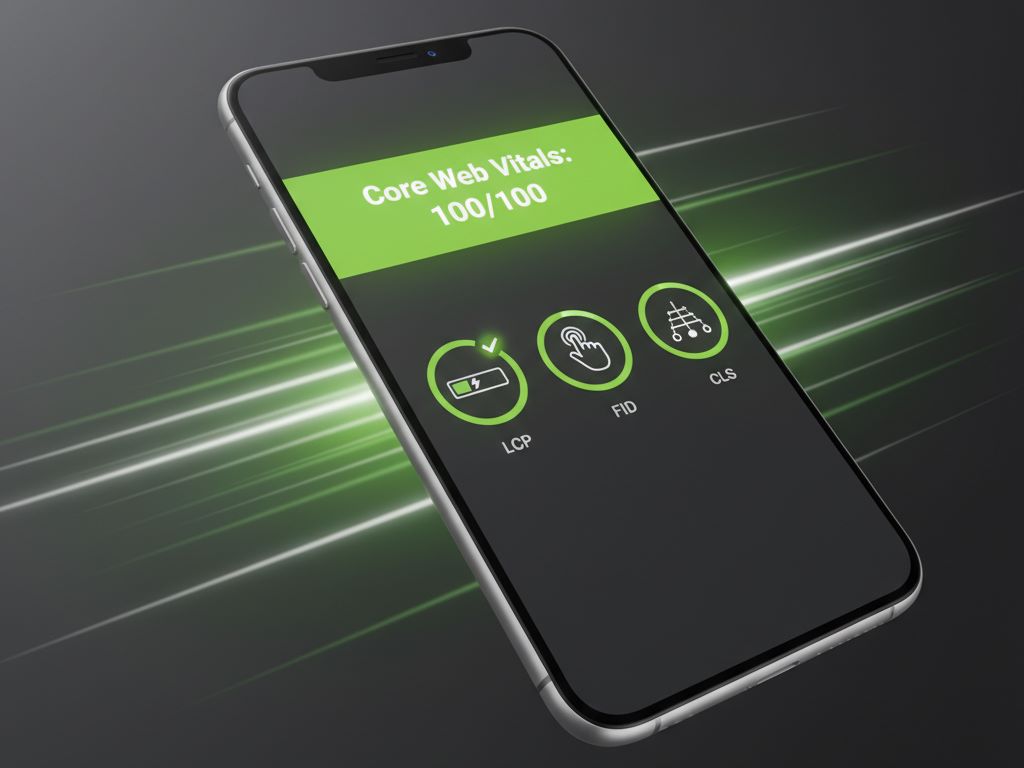
The Core Web Vitals Checklist: How to Achieve a Near-Perfect Score on Mobile Devices
In today’s digital economy, the speed and responsiveness of your website are are fundamental requirements for appearing in search results. Google mandates adherence to Core Web Vitals (CWV) metrics, particularly for mobile experiences. A low score on these metrics directly hinders your discoverability and affects user satisfaction. Honestly, you must consider that optimizing your site for CWV is the most essential step toward high performance.
This post will walk you through five crucial technical adjustments you need to implement. When these elements are properly configured, your website achieves the performance rating necessary to overcome the speed challenges inherent in mobile browsing across Nigeria and globally.
Understanding the Essential Performance Focus
It is important to understand that Core Web Vitals measure three specific aspects of user experience: loading, interactivity, and visual stability. These are not arbitrary metrics; they represent how a human being perceives your site’s functionality.
The focus is paramount:
- Loading: Measured by Largest Contentful Paint (LCP). This is the time it takes for the largest element (usually an image or block of text) on your page to become visible. A slow LCP means the user waits too long to see the primary content.
- Interactivity: Measured by First Input Delay (FID). This tracks the time from when a user first interacts with your page (e.g., clicks a button) to when the browser actually responds. A high FID means the user experiences lag.
- Visual Stability: Measured by Cumulative Layout Shift (CLS). This monitors unexpected shifts of page elements while the page is still loading, preventing users from clicking what they intend to click.
To achieve a near-perfect mobile score, you must address each of these three areas with technical precision.
1. Address LCP: Prioritize the Critical Rendering Path
The Largest Contentful Paint (LCP) often presents the biggest challenge. To gain a strong score, you must deliver the largest content element—usually a hero image or headline text block—in under 2.5 seconds.
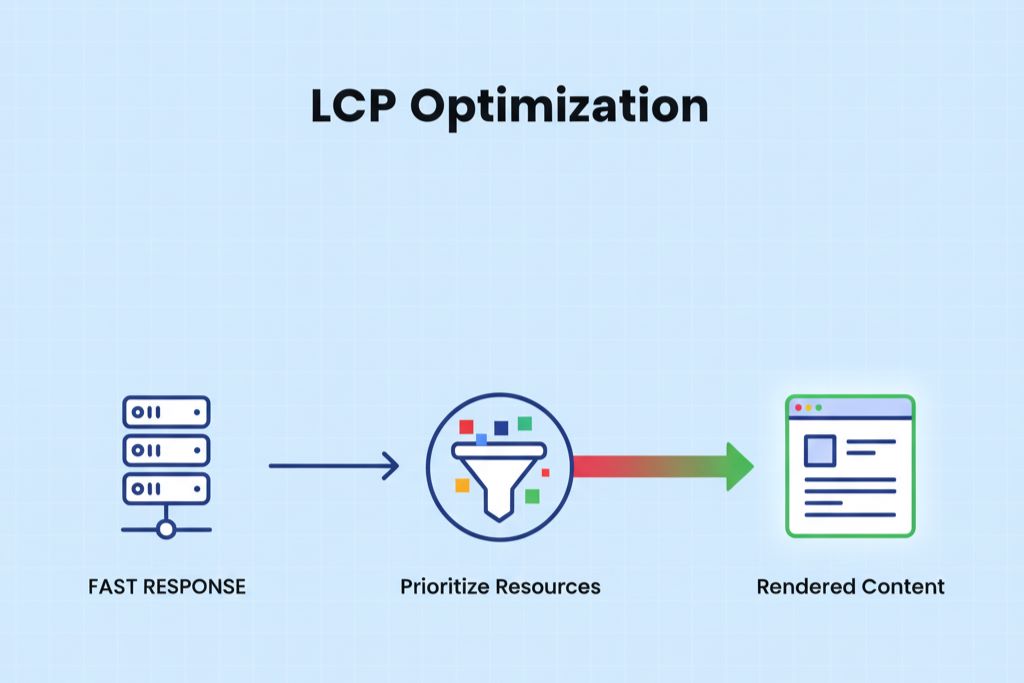

- Server Response Optimization: Ensure your server response time is swift. This means leveraging quality hosting infrastructure. Go Beyond Local can assist in evaluating and configuring high-speed hosting solutions available for your region.
- Resource Prioritization: Identify and defer the loading of any non-essential Cascading Style Sheets (CSS) or JavaScript files that appear before the main content. Only the absolute minimum code required to render the LCP element should be loaded first.
- Image Compression and Sizing: The largest image on your page should be served in the correct dimensions for the device and heavily compressed. Use modern formats like WebP where possible, as they offer superior compression.
When you optimize the critical rendering path, the user sees the primary page content rapidly, leading to an immediate improvement in the LCP score.
2. Overcome FID: Break Up Long JavaScript Tasks
You get the point, yes? When the browser is busy processing a massive block of JavaScript code, it cannot respond to user input. That lag is what generates a poor First Input Delay (FID).
To overcome this difficulty, the main thread needs to be available quickly. We now need to ensure the following:
- Code Splitting: Divide large JavaScript bundles into smaller, focused chunks. Load these chunks only when they are needed for a specific function, rather than all at once on initial page load.
- Third-Party Script Management: Limit the number of external scripts (like analytics, ads, or social widgets). When you must use them, load them lazily (only when they enter the viewport) or defer them to run after the main page content is interactive.
- Web Workers: Where heavy processing is mandatory, such as complex data handling, leverage Web Workers. This ensures those processes run in the background, keeping the main browser thread free for immediate user interaction.
Honestly, reducing the amount of time the main thread is blocked is the most direct path to a near-perfect FID score.
3. Mitigate CLS: Reserve Space for Dynamic Elements
Unexpected shifts in the layout (CLS) cause frustration; users click something, and the element moves right as the click registers. This issue often results from dynamic content, like ads or embedded videos, loading without reserved space.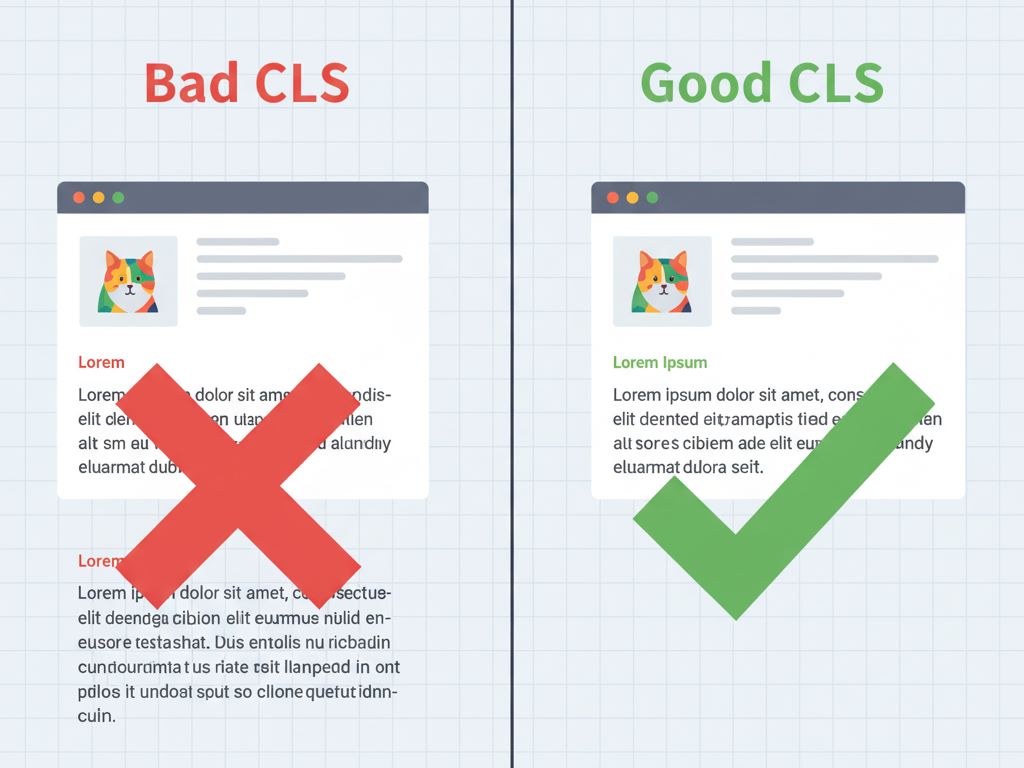

We must address this instability with precision:
- Explicit Dimensions: Always include width and height attributes on images and video elements. This tells the browser exactly how much space to reserve before the content loads, preventing surrounding elements from shifting.
- Font Loading Strategy: Fonts loaded from external sources can cause a shift when the fallback font is suddenly replaced. Use a
font-display: optionalorswapstrategy to manage this transition gracefully, and ensure text stays in place. - Avoid Uninjected Content: Avoid inserting new elements above existing content unless a user action triggers it. This practice forces the entire page to rearrange, which directly increases the CLS score.
When you properly reserve space for all elements, you deliver a stable visual experience, which is crucial for a positive mobile interaction.
4. Leverage Browser Caching for Repeat Visits
It is a known fact that users often return to websites that offer valuable services. For these repeat visits, browser caching is an essential optimization.
Caching instructs the user’s browser to store local copies of static assets (images, CSS, fonts). On a subsequent visit, the browser loads these assets directly from the local device, bypassing the network request. This immediately and drastically reduces the loading time for repeat users, which positively affects all three CWV metrics.
You should focus on caching directives:
- Expiration Headers: Implement appropriate
Cache-Controlheaders on your server to define how long the browser should store static assets. - Asset Fingerprinting: When you update an asset (like a CSS file), ensure its file name changes (e.g.,
styles-v2.css). This forces the browser to fetch the new version while retaining the cache for all other files.
Leveraging this technology helps you maintain high performance, particularly on slower networks prevalent in some parts of the region.
5. Review and Compress CSS for Efficiency
Even after optimizing JavaScript, you need to turn your focus to Cascading Style Sheets (CSS). Unnecessarily large or poorly written CSS files delay rendering and consume valuable network bandwidth.
Honestly, you must reduce the file size of your CSS:
- Minification: Remove all non-essential characters from your CSS files, including comments and white space. This makes the file lighter without changing its function.
- Eliminate Unused CSS: Many templates load code for elements that are never used on the page. Tools are available to identify and remove this dead code, ensuring only necessary styling is loaded. This is a highly effective way to gain faster initial load times.
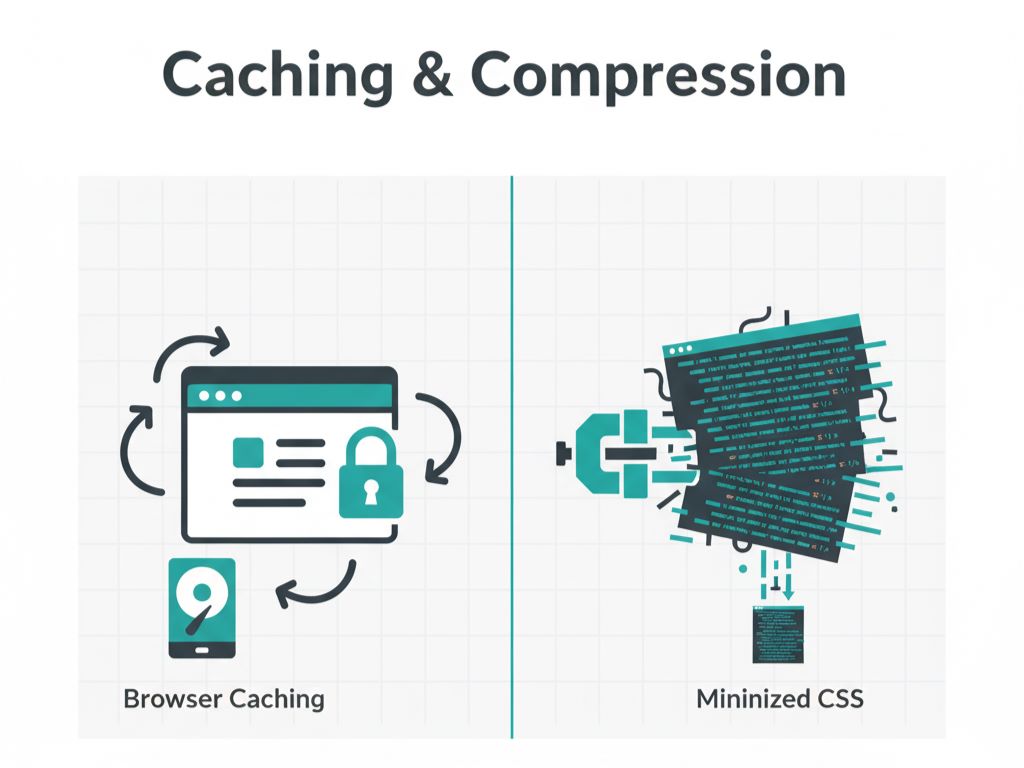

Your Partner for Smart Digital, Creative & Publishing Solutions.
Technical Guide
Implement Local SEO Fixes for Lagos: Beat Google Maps Competitors


Local SEO for Lagos: 5 Website Arrangement Fixes That Beat Competitors on Google Maps
When your business operates in a competitive market like Lagos, standard search engine optimization (SEO) offers limited value. Your potential customers are looking for you now, and they are often using their phones to search for services “near me.” When your website’s arrangement is faulty, you miss the crucial opportunity to appear prominently on Google Maps and in the local search pack. Honestly, you must consider the technical arrangement of your site as the most vital layer of your local SEO fixes for Lagos.
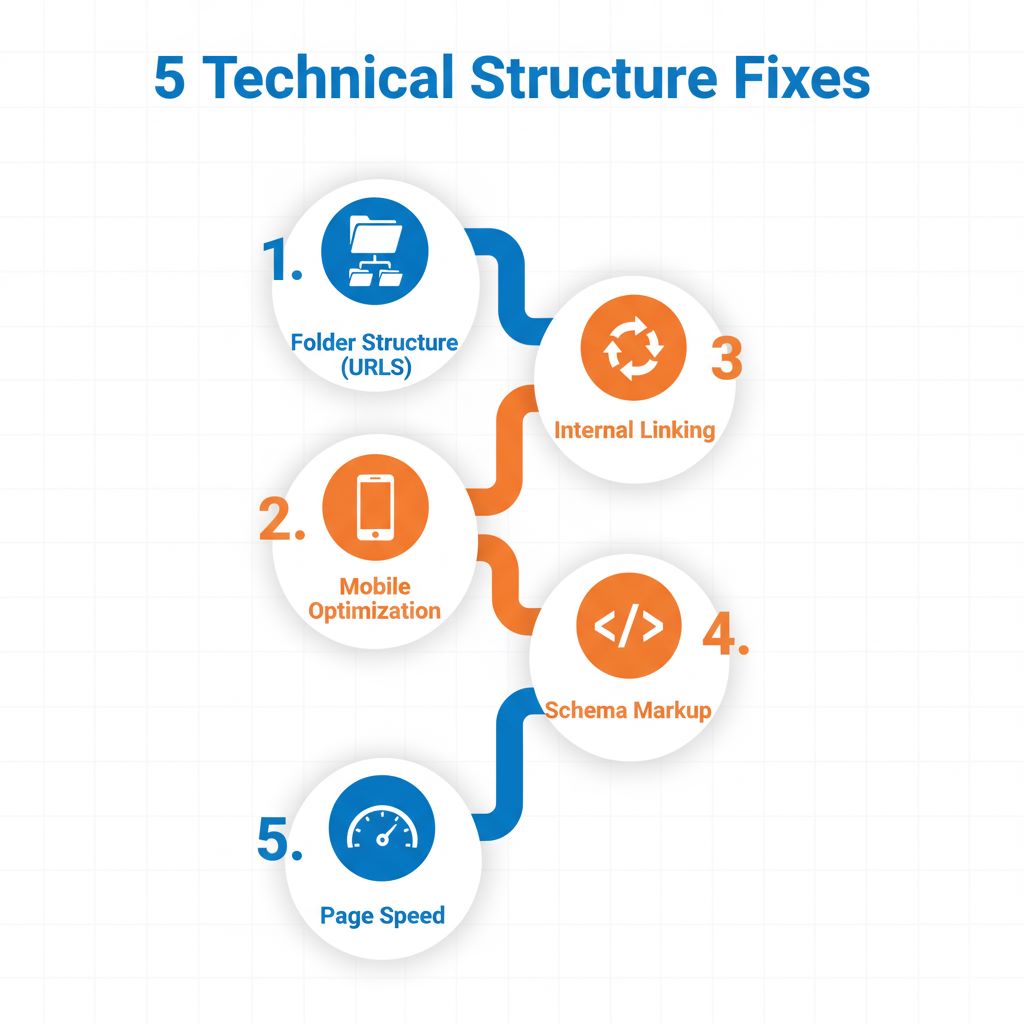

A hand drawn diagram illustrating five precise Local SEO fixes for Lagos website structure.
This post will explore five essential arrangement and configuration steps you can implement today. When these elements are correct, your site establishes the verifiable geographic authority necessary to overcome high local competition.
The Paramount Mandate of Verifiable Local Data
It is important to understand that local ranking is a matter of factual verification, and not just keywords. Google’s system works to present the most relevant and established local entity. When your website gives conflicting signals, the system lacks the confidence to rank your business above others that maintain data fidelity.
Consider the reality within Nigeria. Data from the Nigerian Communications Commission (NCC) consistently shows high mobile internet penetration. When a customer is searching for a service provider, perhaps a law firm in Ikoyi or a caterer in Surulere, they are usually on their phone and require immediate, precise information. When your site arrangement fails to articulate your location clearly, you simply surrender the opportunity.
1. Fix the Core Data Arrangement: NAP Consistency Across Your Digital Footprint
The foundation of any successful local ranking is NAP consistency. NAP stands for Name, Address, and Phone Number. This is a critical arrangement point you need to focus on.
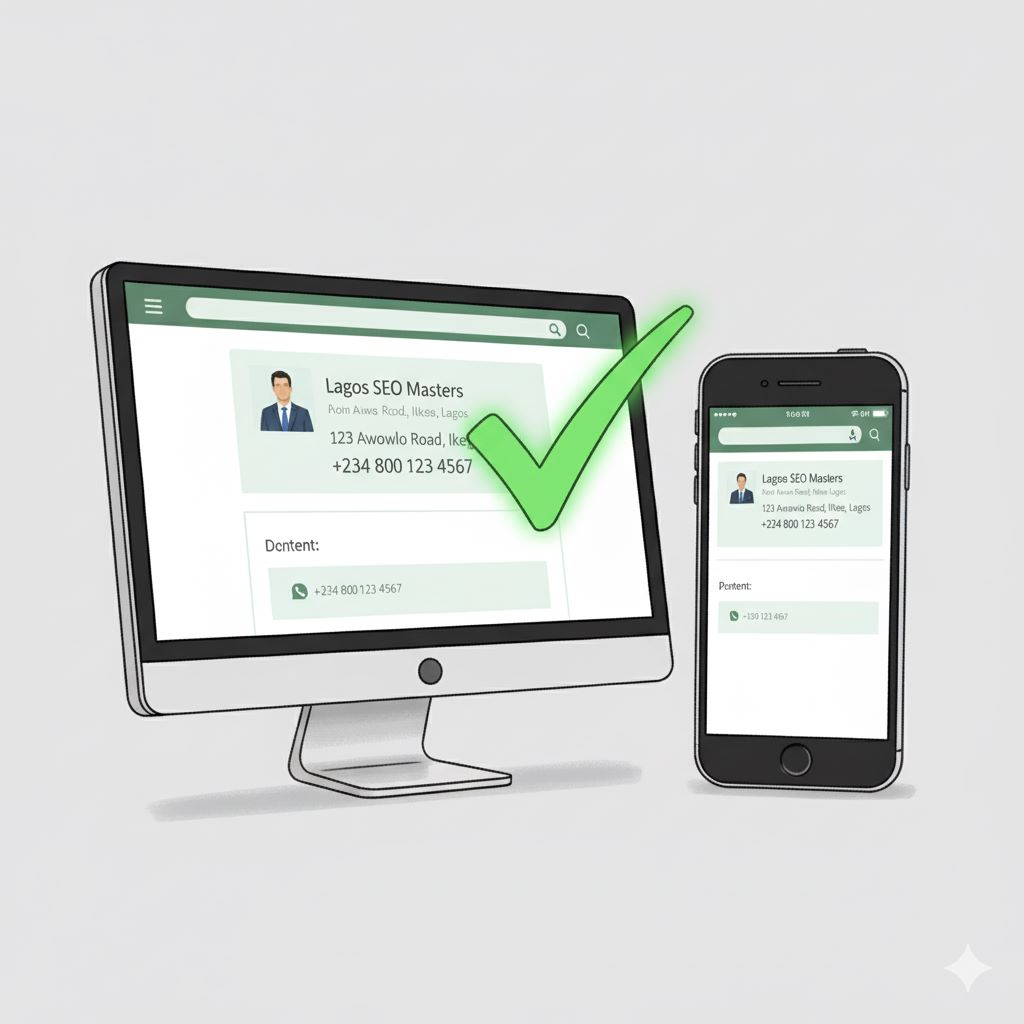

Ensuring Content Consistency on Mobile to master mobile-first indexing for local search.
Everywhere your business appears online, your website, your Google Business Profile (GBP), and third-party directories, the NAP details must be exactly the same. Even small variations, such as using “St.” instead of “Street,” or different phone number formats, introduce ambiguity for Google’s verification system.
You must implement these steps:
- Establish a Master Record: Define the single, formal version of your business name, address, and primary contact number.
- Header and Footer Integration: Ensure the exact Master Record is text-based and visible in the header and footer of every page on your website.
- GBP Synchronization: The address on your website’s contact page must match the address used to verify your business on Google Business Profile, down to the punctuation.
This consistency is a fundamental local SEO fix for Lagos because it confirms that your digital presence references a single, verifiable physical location.
2. Implement the LocalBusiness Schema Markup Arrangement
Beyond having the NAP visible, you need to structure this data in a language search engines can process instantly. This is where LocalBusiness Schema Markup comes in.
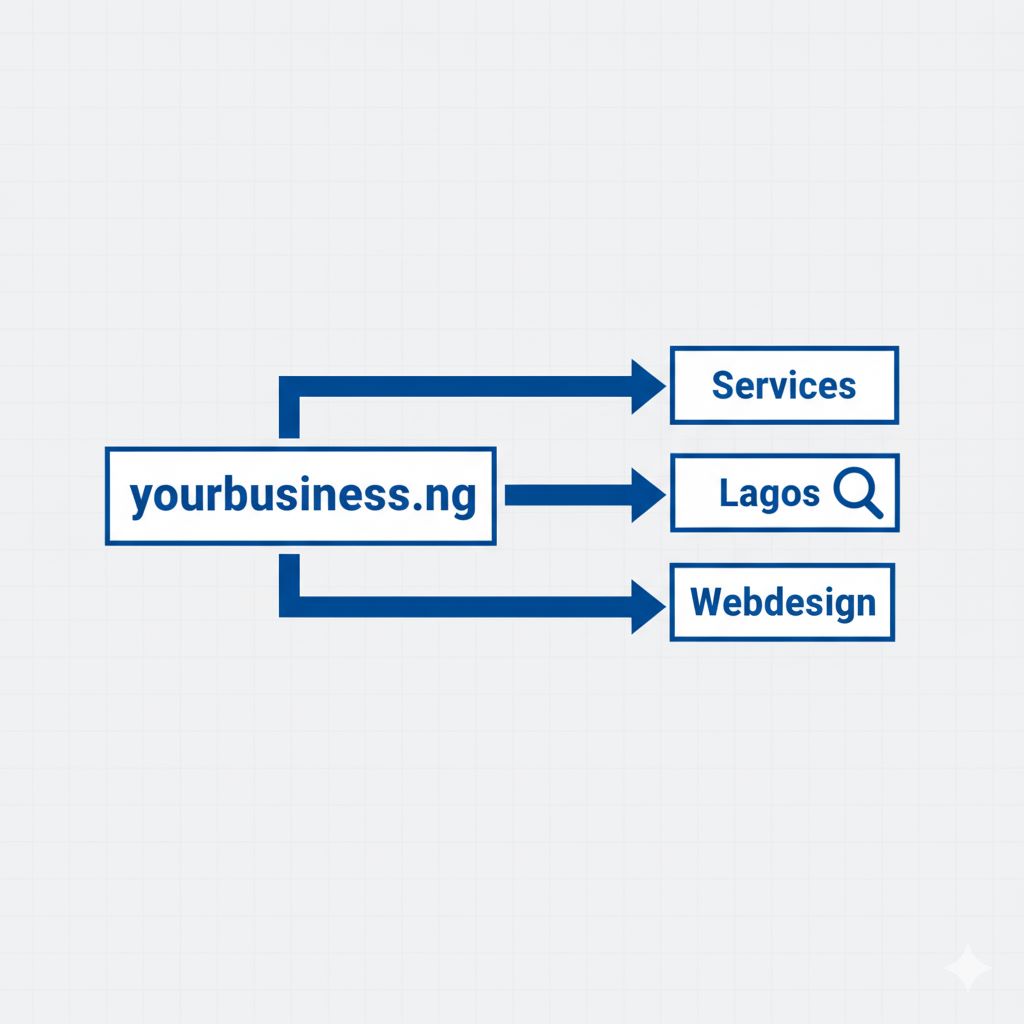

Visualizing the Geo-Specific Subdirectories structure for Local SEO Fixes for Lagos.
This technical arrangement involves placing specific code on your contact pages and your home page. This code explicitly tells search engines: “This is the name of the business, this is its verifiable address, and these are its operating hours.”
You should arrange this information directly, and not rely on Google guessing this information from text alone. We now need to ensure the following fields are accurately captured within the schema code:
@type: (e.g.,LocalBusiness,Organization, or a more specific type likeAttorney)name: The official business name.address: The full, consistent physical address.geo: The latitude and longitude of your physical location (highly precise arrangement).
When this schema is correctly arranged, your website speaks directly to the search engine’s ranking algorithm, boosting the confidence level the engine has in your local identity.
3. Arrange Service Content via Geo-Targeted Service Area Pages
When your business serves all of Lagos, simply listing “Lagos” is too vague. To overcome competitors, you must demonstrate relevance within specific neighborhoods. This is accomplished by arranging geo-targeted service area pages.
A web development firm serving the region, for instance, should have separate, focused pages such as:
- “E-commerce Development for Businesses in Ikeja“
- “Web Application Solutions for Startups in Lekki“
- “Website Maintenance for Organizations in Apapa“
Each of these pages must feature unique, relevant content about the services delivered in that specific locality. The local keyword phrase is used naturally in the headline and throughout the body text, and a map showing the coverage area can be integrated. This content arrangement is a powerful local SEO fix for Lagos because it targets the highly specific user search intent for micro-local areas.
4. Prioritize Mobile Speed and User Arrangement on Entry
You get the point, yes? Most Nigerian consumers are searching on mobile devices. A website that loads slowly or provides a poor mobile user arrangement experiences automatic penalty in local search rankings.
Google prioritizes sites that load quickly because the user experience is paramount. This is a technical arrangement, and not just a design feature.
Focus on these performance elements:
- Image Compression: Ensure all high-resolution images are compressed for rapid mobile loading with clear clarity.
- Server Response: Ensure your hosting environment offers a swift response time, particularly critical for local traffic.
- Clear Mobile Layout: The mobile version of your site must have click-friendly buttons, clear navigation, and legible text, as a poor arrangement here leads to higher bounce rates.
When your website is fast and easily navigable on mobile, you send a direct positive signal to the search engine, which translates to an improved local visibility rating.
5. Optimize Internal Link Arrangement for Geo-Relevance
The way your pages connect internally influences how search engines understand your site’s operational focus. For local SEO, you need to use internal links to connect your geo-targeted pages to your primary contact pages.
This internal link arrangement ensures that the authority of your primary domain flows directly to your localized service pages.
For example:
- On your general “Services” page, link directly to your “Lekki E-commerce Development” page using the anchor text: “Lekki E-commerce Development.”
- On your blog posts, whenever you mention a Lagos locality or industry, link back to the relevant geo-targeted service page.
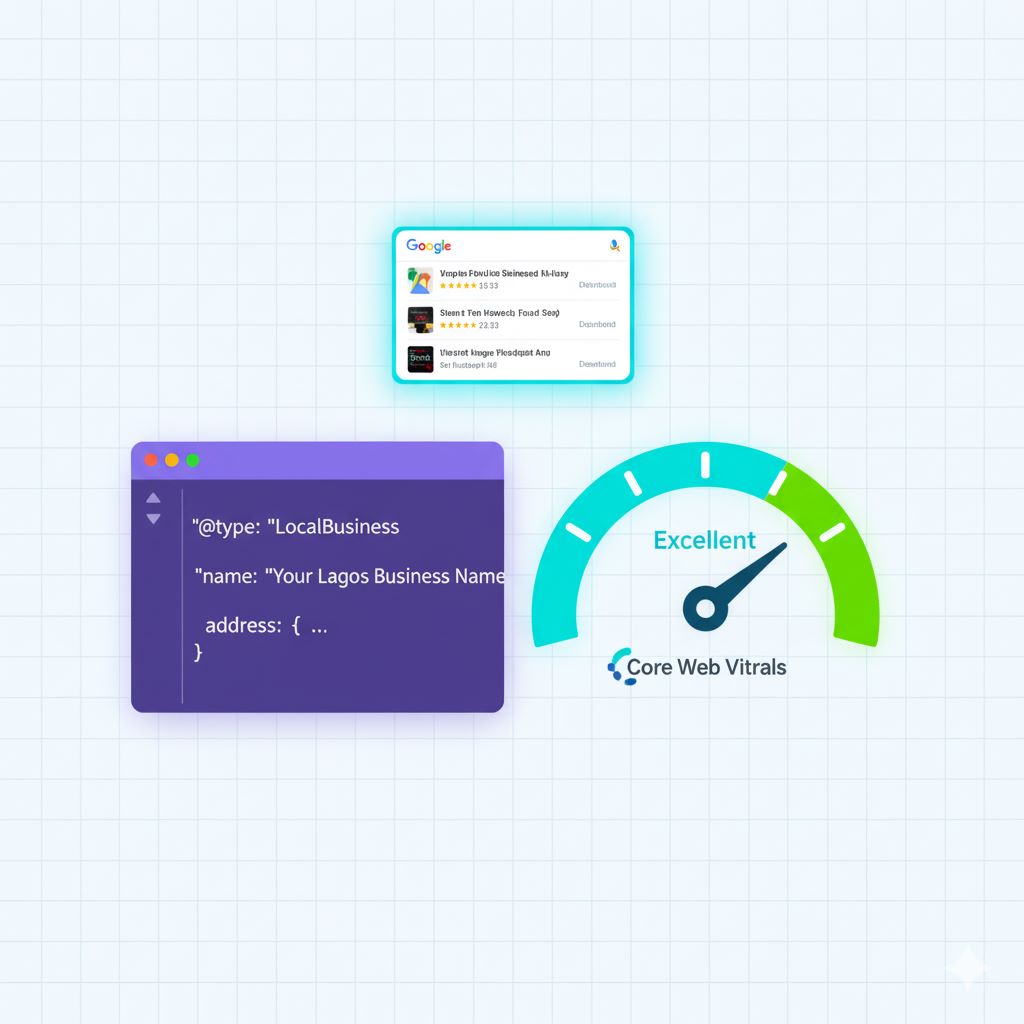

The combined impact of LocalBusiness Schema and high Page Speed on SERP dominance.
This process establishes a tight web of internal references, reinforcing your geo-relevance and making your local SEO fixes for Lagos far more effective.
If you are serious about standing out in this market, you must treat your website’s technical arrangement as a priority. Go Beyond Local is available to discuss how a technically sound, performance-focused website arrangement can deliver the geo-relevance your business requires.
Your Partner for Smart Digital, Creative & Publishing Solutions.



 Technology3 months ago
Technology3 months agoHow One Misplaced Dot Broke a Bank Login Page



 Technology3 months ago
Technology3 months agoInternet Sovereignty: Why Some Countries Want Their Own Separate Internet



 Technology3 months ago
Technology3 months agoThe Untold Story Of The Nigerian Who Helped Build Global Internet Systems



 Security First3 months ago
Security First3 months agoNigerian Hackers: The Global Fraud Story and Its Fallout



 Technology3 months ago
Technology3 months agoForgotten Satellites Defy Silence, Beaming Signals for Decades



 Technology1 month ago
Technology1 month agoThe Smallest Change That Will Affect All Digital Operations



 Stay Human10 months ago
Stay Human10 months agoStop Being Busy, Start Being Productive – Focus on What Matters to Achieve Success



 Technical Guide2 months ago
Technical Guide2 months agoImplement Local SEO Fixes for Lagos: Beat Google Maps Competitors


